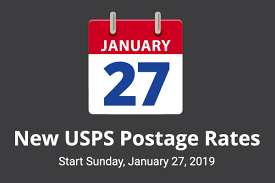
By
With all the uncertainties of recent years around globalization and international trade, one thing remains absolutely certain: we will all continue to trade across borders and, as we’ve discussed in the pages of DHL Expressed before, e-commerce is only continuing to thrive. In fact, a recent customer survey by DHL found that 57 percent of respondents plan to leverage e-commerce as their top sales strategy in 2017.
E-commerce is not a particularly new phenomenon. And neither, for that matter, is cross-border e-commerce. People have been able to order goods from around the world for years now, particularly from major online retailers. That helped the cross-border market grow to $300 billion in 2015. Looking forward, e-commerce is expected to continue flourishing in the coming years. DHL recently published “A Guide to the Cross-border E-commerce Opportunity,” a study conducted with the support of a leading global management consultancy, and it has yielded some fascinating insights.
Market size and dynamics: The study found that the cross-border e-commerce market offers superior growth rates to those available in just about any other retail segment today. Cross-border e-commerce is expected to grow on average at twice the rate of domestic online retail (which itself is growing faster than traditional bricks-and-mortar) in the period leading up to 2020. By then, the market will be three times bigger than it was in 2015. Additionally, cross-border e-commerce results in more spending by customers: 20 percent of cross-border purchases have a basket value of more than $200.
Premium shipping is here to stay: The premium aspect of cross-border e-commerce is worth noting. According to the DHL report, retailers who provide a premium service offering (such as faster delivery) are growing 60 percent faster than the average. This is driven in part by the fact that fashion and technology still account for a substantial proportion of cross-border sales. But a premium opportunity exists for every product, both in terms of what the retailer offers and what the customer demands.
A logistics partner you trust is important: The main barriers customers cited to buying products from overseas are logistics, trust, price and customer experience. Today, reliable global door-to-door logistics networks connect businesses with customers and enable easy returns anywhere in the world. In addition, off-the-shelf solutions make website visits, price calculations and transactions possible in just about any language or currency. This allows small businesses to alleviate many customer concerns about e-commerce cross-border purchases.
The DHL study reveals that there is a modern-day equivalent of the Silk Road spice trade emerging, one that requires new approaches to managing inventories, supply chains and even customer interactions. But it also points to a clear growth opportunity for all retailers and manufacturers. Businesses surveyed reported an average sales boost of 10 percent by simply having a cross-border option.
For those businesses that connect most effectively with the global market, cross-border e-commerce will deliver handsome rewards. Most important, a connected global market will allow all businesses to leverage the very best of their unique culture, skills and creativity.





